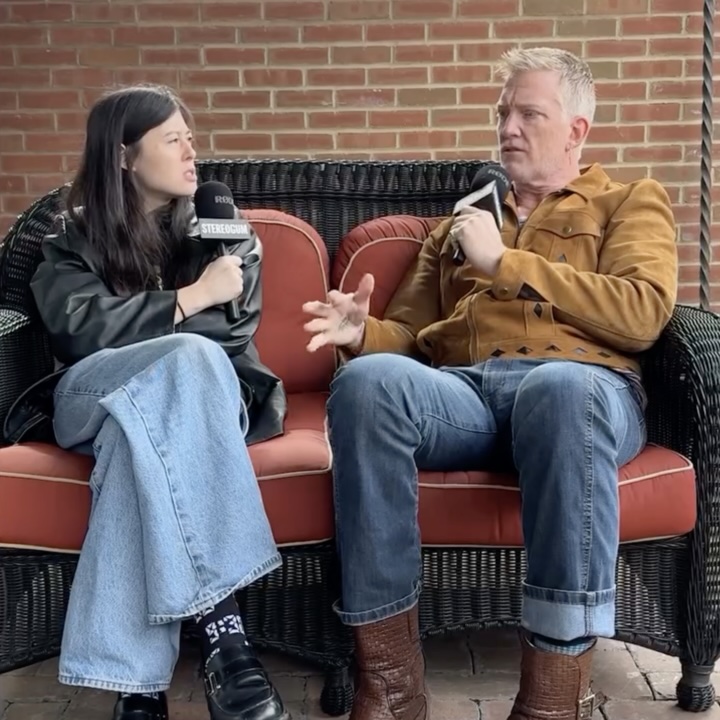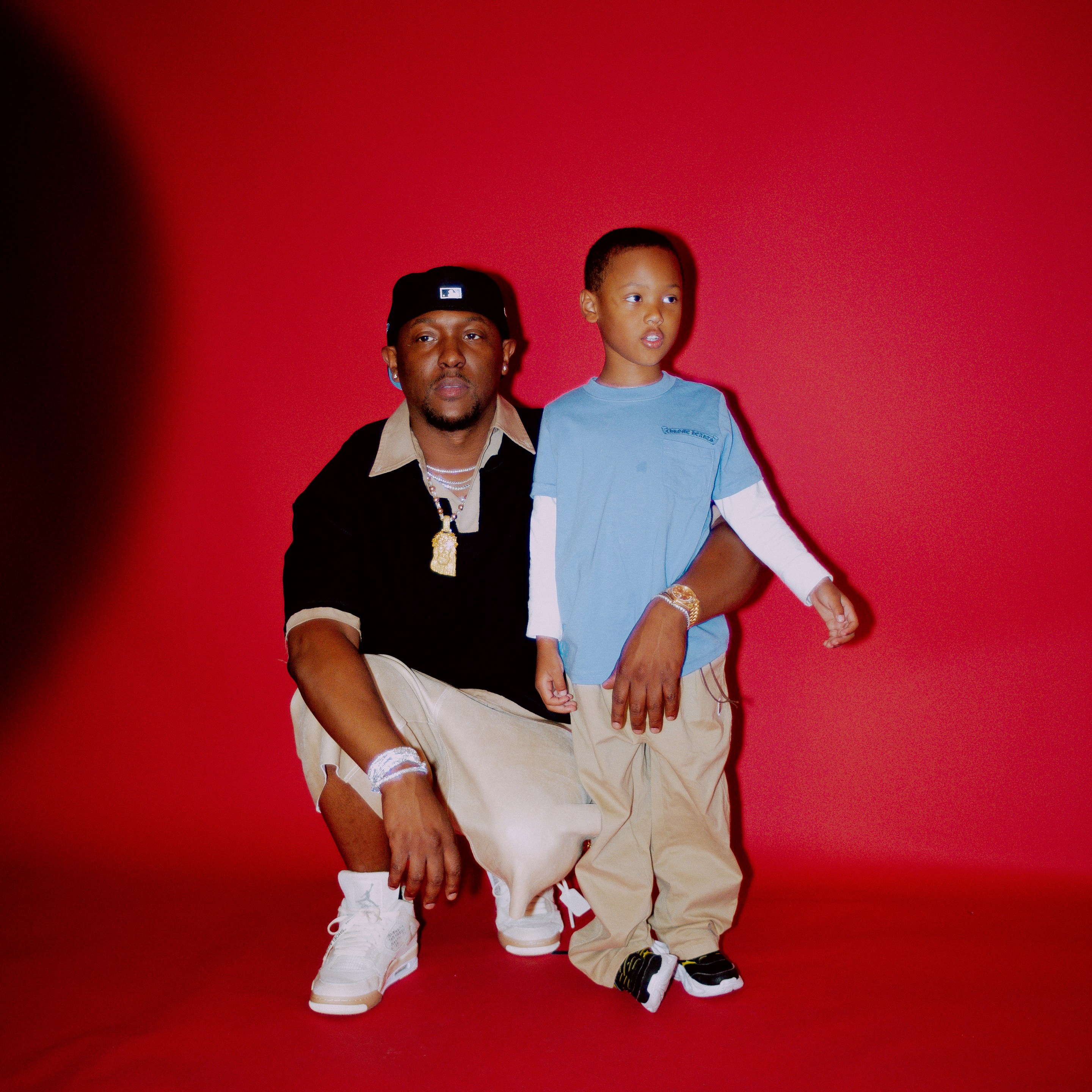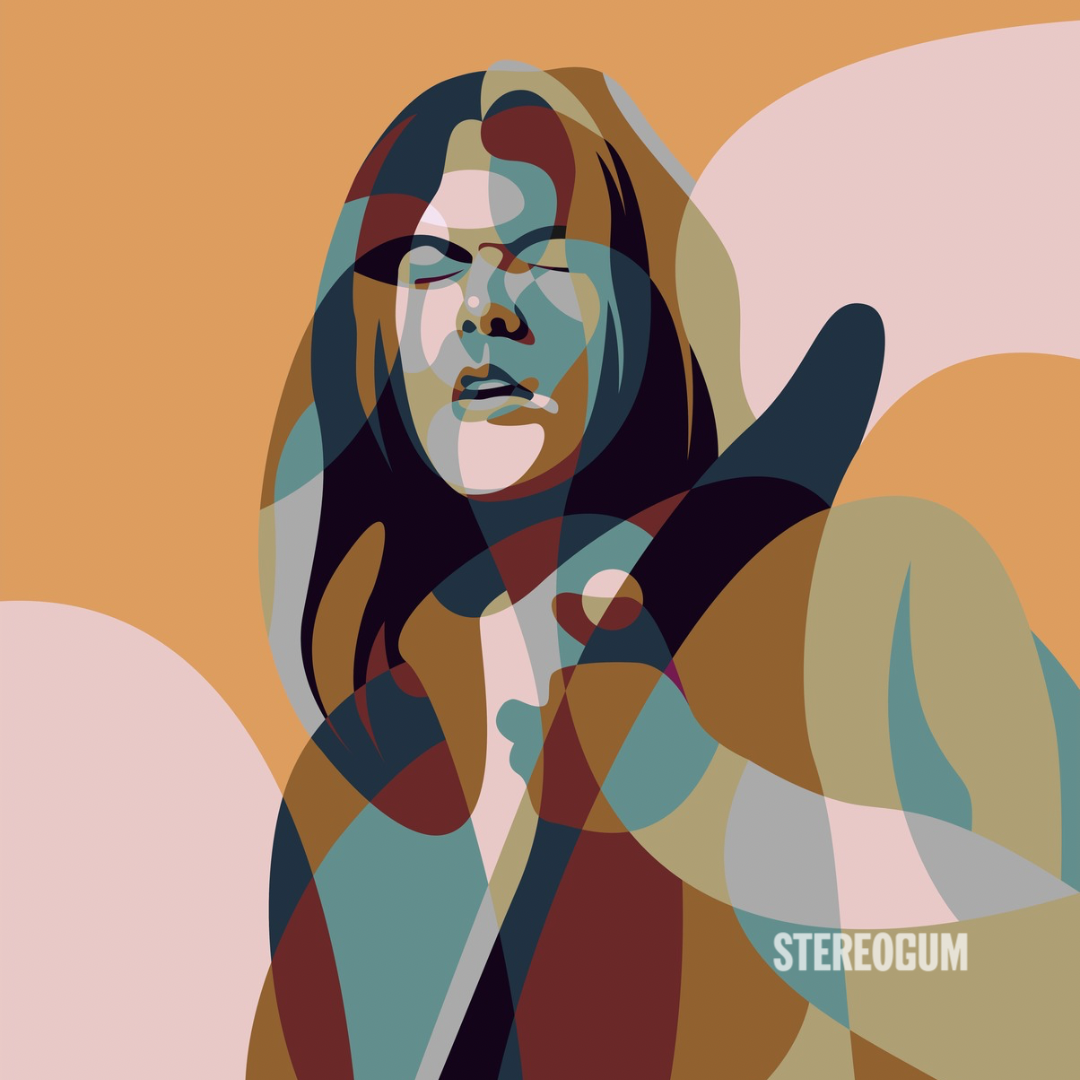Given the nature of her work -- the intricate arrangements; the complicated, often byzantine lyrics; the harp; that extraordinarily wild voice -- it's not surprising that Joanna Newsom has managed to engender such a devoted fan base. She is the very definition of a "singular" artist -- someone whose work is totally unmistakable as belonging to anyone else. Over the course of three increasingly challenging full-length releases, Newsom has risen from the ranks of twee freak-folkster to something resembling a kind of rarefied rock stardom (or as close as one can come to such a thing in the world of indie rock). Her last record, 2010's Have One On Me, was a three-disc behemoth of beautifully knotty songs about love and friendship and the occasional jackrabbit, which was somehow still less challenging than 2006's Ys, her Van Dyke Parks-arranged extravaganza that boasted songs that regularly twirled past the 10-minute mark and pushed Newsom's love of winding narratives to dizzying new levels. This being said, Newsom's music, while always fascinating, is admittedly not for everyone. Her work should ostensibly be the kind of material destined only to guarantee lifetime status as a cult figure, but for whatever reasons -- her uncanny charisma and profound talent among them -- people have been willing to follow Joanna Newsom wherever she has seen fit to go. Her new album, Divers, should only deepen her fan base. The record is no less ornate than previous efforts, but with only 11 tracks, it's a much more digestible affair. The production is predictably lush (including contributions from Nico Muhly and Dave Longstreth), and the songs still sprawl in a million fascinating directions, roaming across narratives involving everything from pearl divers and goose eggs to ancient tobacco settlements. However, there is a clarity of vision and a heightened melodicism at play on Divers that makes the record slightly easier to tackle than her last two releases, even though the repeated listens and slow process of unpacking is often what makes Joanna Newsome records so fascinating.
I met up with Newsom in NYC to talk about her new record, her process, and -- ultimately -- the strange business of talking about one's art. For someone who gets frequently portrayed (somewhat maddeningly and derisively, in my opinion) as a kind of whimsical elf woman and/or a quirky eccentric who, as one friend recently mentioned, "one imagines living in an enchanted forest somewhere in Narnia," Newsom is remarkably unfussy when it comes to talking about her music. She is, however, not remotely interested in dispelling any mystery her work might hold for her fans. "I feel like people in general would prefer to have their own experiences getting into the songs," she says. "The way the songs are written -- the references and the double meanings, those sorts of things -- for me, those give life to the music. Those are for me. Those make the air breathable and the ground solid underfoot. They create a realness and a substance in the songs, but they're not what the songs are necessarily about."
[videoembed size="full_width" alignment="center"][/videoembed]
STEREOGUM: I know you've just started doing the press for this record. How is that experience for you? I know a lot of artists find it more than a little painful.
NEWSOM: What's painful for me is the photo stuff. I really hate doing photo shoots. I just wish every photo shoot I do could be with my friend Annabel. She's done my press shots and she also did some of the album artwork, and I feel very safe with her. It becomes kind of a fun collaborative thing with her, but I have so much anxiety about it normally. If there were some way to get away with not doing it, then I wouldn't, but there are a lot of publications that say, "We will only do this article if you do a photo shoot with us. We need exclusive photos that we take." And you know, I want to get that sweet, sweet press. Move some units, you know? [laughs]
STEREOGUM: After finishing the touring cycle for Have One On Me, did you take a break before starting on new music, or are you someone who is always working?
NEWSOM: Typically I have taken time at the end after a long tour cycle. With this record I didn't. Basically as soon as things calmed down after touring Have One on Me -- actually before touring had even really stopped -- I started writing this album and I really felt pushed toward something. The early stuff didn't feel speculative. It just started to happen. I definitely didn't think it was going to take me five years. I was blissfully ignorant of how long it would take, but I had a very strong idea early on what I wanted it to be, and it just took so long to happen.
STEREOGUM: Your work is often driven by these very complicated narratives. How does the process usually work for you? Does the music and the story kind of evolve simultaneously, or do you begin with these stories that you want to tell and allow the music to evolve around them?
NEWSOM: In general, the thing that comes to me first is the bare-bones version of the melody and chord progression. Basically, if the song was stuck in your head and you are humming it to yourself, the thing you would hum: That's usually what comes to me first. I think I usually know what the song is about at that point, but I don't really have the lyrics for it, I don't have structure for it, and usually I don't have a sense of narrative progression. Although, sometimes I do. Sometimes I see the beginning, the middle, and the end; I just don't have words for it yet. The next thing -- and usually kind of last of all -- is the refinement of the instrumental parts. It might be very plinky-plonky at first: chord, chord, chord, chord, and then by the end it has some harmonic interest and rhythmic thing happening.
STEREOGUM: Has that process changed a lot over the years or has it always sort of been that way?
NEWSOM: I think it's changed a lot of times. I always feel a little guilty when answering questions about process because I'm sort of always guessing. I don't remember writing most of my songs for the first 15 to 20 percent of the process. By the place where my memory kicks in, the song has had a fair amount of development by that point.
STEREOGUM: I think that's a good thing.
NEWSOM: Sure! It's weird though. Normally, in other walks of life, if you have long stretches of time that you black out about and can't remember, it's not healthy.
STEREOGUM: I think in creative processes, being able to work in a way where you're totally un-self-aware and are sort of just lost in the process, that's usually when something good is happening and you're not constantly pausing to second-guess things. You're in it.
NEWSOM: I think that's right. I think probably it's not a coincidence that my memory tends to kick in at the same point where the work goes from intuitive and sort of compulsive into more refinement level: editing, compositional detail, etc.
STEREOGUM: Was Divers a particularly difficult record to make?
NEWSOM: That's a hard question to answer, because I think of difficulty as sort of an unpleasant and joyless sensation. And that's the opposite of how the record felt. It was a lot of work, it was a lot of hard work, but it was also like good, honest work. Like, if you have a pile of rocks that you want to move to a different spot in the yard, you move them rock by rock ...
STEREOGUM: That's a funny analogy. It was like moving rocks?
NEWSOM: Well, you know, you're out in the sun and you're humming to yourself and you know exactly where each rock needs to go, but it takes some time, and they're heavy, and sometimes you have to call a friend and borrow a wheelbarrow. Maybe one particular friend you have is super good at moving rocks a certain way, so you get that friend to come in and move a couple of rocks, put their own spin on the rock-moving. Then you have to climb up on the roof, look at the rocks from a distance, make sure they look stable and they aren't going to fall. The whole thing is, you know what you're doing: You're moving rocks. There wasn't like a moment where I existentially forgot what I was doing or questioned the importance of the rock-moving.
STEREOGUM: After listening to this record, I went and watched some YouTube videos of how people learn to play harp. It's so complicated. It's unbelievable to me that anybody ever learns how to do it.
NEWSOM: It feels really weird when I'm rusty, when I don't have calluses. When it's been long enough that I lose my calluses, that makes me feel really sad and guilty. It's much more comfortable to feel like I'm in shape.
STEREOGUM: You once very notably referred to you voice as being essentially "untrainable" ...
NEWSOM: That's one of my least favorite things I've ever said. The innocence or ignorance of youth or whatever.
STEREOGUM: I remembered that quote while listening to this record, I guess because I really don't think that's a true statement about your voice. Particularly on this record, your voice sounds very controlled and very strong in a way that it didn't used to.
NEWSOM: I think when I called my voice "untrainable" -- which was, like, 107 years ago, when I made my first record -- I think it was kind of a defensive thing to say. I think it was probably after having been told by like 8,000 journalists that they thought my voice was confrontational. They thought I was willfully trying to comment on popular conventions of vocal beauty, and like there was something kind of punk rock about it, and I think at that point I was trying to say, "Well, I can't help it. I can't sing another way. I can't train myself to sing another way." But "untrainable" was the wrong word to use, because after I made that first record, I started touring a lot, and in a non-formal sense, I started training it. When you use your voice at two-hour concerts every single night, it shapes and changes it.
Then I did it again with Ys -- my voice was different on that record. Then I toured again for a few more years, and I was playing two-hour shows every night for months on end, and then I got vocal-cord nodes right before recording Have One On Me and decided to go to a vocal coach in order to try to prevent that from happening again. I learned some warm-ups that are geared toward not getting vocal-cord nodes. Then I toured that record for a couple of years, and in the course of touring, I was doing these vocal warmups every single night before a show. I do my vocal warmups every time I rehearse, every time I record, before anything. That is a kind of training.
STEREOGUM: It's amazing what a huge difference it makes.
NEWSOM: I think I gained over an octave. If you add top and bottom range, I think just from doing vocal warmups every night, I think I gained an octave and a half in total. At least maybe five or six whole steps in either direction.
STEREOGUM: When you finish a record, there's that period of time when it's totally done, but before everybody else in the world gets to hear it. Do you ever have a moment when you look at the finished record and see that you were working out things -- maybe certain themes and ideas -- that you didn't even realize were there?
NEWSOM: I've had that with albums in the past. I'm curious if I'll have that with this one, because the path for this one felt so clear in a weird way, especially narratively. I felt pretty clear on what I wanted to say with the songs. You're right, there is an element of looking back in the music, but I think more specifically with this record, I'm looking at time.
STEREOGUM: Do you anticipate doing a lot of touring for the record?
NEWSOM: Yeah, I think I'm slowly moved in that direction. I'm trying to figure out how to tour in a way that is more sustainable and doesn't make me so crazy that I get turned off touring and stop touring forever.
STEREOGUM: Touring is hard, but it shouldn't feel like torture.
NEWSOM: It's hard to do, and it's kind of expensive to do -- that's the tricky thing. So I have to figure out how to tour the way I want to tour and not be paying for the privilege of doing that. It's a puzzle I haven't quite solved yet, but I know I can't go back to the way I toured around Ys, where I was doing nine-week leg after nine-week leg. Every aspect of everything I owned was just permeated with the scent of bus.
STEREOGUM: It's also much less of a novelty when you're not in your early 20s anymore and doing it for the first time.
NEWSOM: That's true. I also think there might be some people that are just naturally better attuned to the fast pace of travel. I like a form of travel; I like the kind of travel where you rent a house in a city and stay there for a month and get to know that area. Long before I was a professional musician, even when I was younger, I did not like traveling in a fast pace.
I've always been kind of a homebody, so touring is hard. I have band members who are awesome at it. They get up in the morning, they rent bikes, they go to museums. Meanwhile, I will be in my curtained-off crypt on the bus until 1:30 in the afternoon, when someone will slip a coffee cup through the curtain and be like, "Please get up. You need to get up or else you will be so sad." [laughs]
STEREOGUM: I find it heartening to see how many people really love what you do. It's great to see music that is ostensibly kind of challenging and a little weird actually be successful out in the world. Are you ever surprised that your work resonates in such a strong way with people?
NEWSOM: Yeah, I mean ... we'll see! This is a new record, so it's possible people might not like it as much. I don't want to be like, I'm just so surprised that people like it and buy it! It's such an amazing thing! ... and then I sell five records. I know a lot of it has to do with my shows. It does seem like a miracle that the thing I'm most interested in spending my time working on is also something that some people want to listen to and that some people have nice things to say about. That's amazing. That makes me very, very lucky. It's rare.
STEREOGUM: I know very few people that actually make a living doing something they love.
NEWSOM: I try not to read reviews or look at stuff about myself online if at all possible, but after the "Sapokanikan" video came out, I saw something that I think my dad sent me: That website Genius had already annotated the lyrics to the song, and it was maybe only hours after the video was out. A lot of the material elements of the song -- meaning the things that could be deciphered or could be researched -- had been thoroughly found at that point. As of the last time I saw it, there were still a few little things that hadn't been figured out, so I was like, "Haha! You haven't got that yet!" But they had gotten so much of it. Obviously that stuff is not all the song is about, but it was such an interesting feeling. I'm just bringing this up in response to you asking if I'm ever surprised. It really felt like a miracle in that moment, because this is a thing that has been secret and kind of precious to me -- where no one has heard it for five years -- and within hours, I put it out in the world and there were people out there deciphering it. There might be literally only six people having this conversation in the whole world, but that's still pretty amazing. That's such an incredible feeling.
[videoembed size="full_width" alignment="center"][/videoembed]
STEREOGUM: Without giving too much away, was there a kind of theme or idea behind Divers, some guiding principle, perhaps, that ties all of these narratives together? Or a reason that, for you, all of these stories make sense being clustered together?
NEWSOM: In the most general sense, while trying not to give too much away ... and by the way, when I say, "give too much away" I don't mean that there's some deep secret that needs to be dug up to understand the songs.
STEREOGUM: It's not like there has to be a right answer. It should mean whatever it means to you -- you being the listener.
NEWSOM: Exactly. To whatever extent there is stuff -- again just referring to the material level -- can you imagine if I had come out with "Sapokanikan" before that annotation thing we were talking about had come out, and if I was just like, "So this song references this, this, this, and that." Those five or six people who wrote up that annotation, they would've been bummed that I just handed that to them.
STEREOGUM: The unpacking and deciphering is part of the pleasure.
NEWSOM: I feel like people in general would prefer to have their own experiences getting into the songs. And some people, by the way, don't care about that side of things at all, and that is just fine. The way the songs are written -- the references and the double meanings, those sorts of things -- for me, those give life to the music. Those are for me. Those make the air breathable and the ground solid underfoot. They create a realness and a substance in the songs, but they're not what the songs are necessarily about.
I would say all the songs on this record either ask the same question, or attempt to make the same case, or are lamenting the same thing or celebrating the same thing or railing against the same thing. I think that, taken as a set or cycle, they are each sort of like relay racers passing the baton on from one to the other. They are circumnavigating the perimeter of the idea that is the central narrative of the album. So each of the songs is representative of one stretch of the landscape. Then you can sort of see that what they've traced is the central thing. So there are all these sorts of set pieces. They're not really what the album is about; they're just things that appear again and again and again: a sort of context.
STEREOGUM: You have a pretty deep catalog now. When you think about your earliest songs, have your feelings about that material changed? Does it feel odd to revisit them?
NEWSOM: A few of them are kind of weird for me to play now. A few of them ... well, I feel really far from the person who wrote them. Other ones, I can kind of find my way back into, even if I'm not the same person I was then. I can kind of sink into it a little bit. Instrumentally, especially, I just feel it in my muscle memory, and playing the songs kind of brings me back there. They shift around over time -- not only my relationships with the songs, but the way the songs sound. Sometimes I'll add instruments or mess with the arrangements to keep it interesting.
I like playing those old songs, though. I like playing all of it. I like playing what people want to hear. I definitely don't have that position of, "Oh, don't make me play the hits!" or whatever my equivalent of "hits" might be. I like playing the stuff people want to hear. It's fun to see people be excited.
//
Joanna Newsom's Divers is out 10/23 via Drag City.






